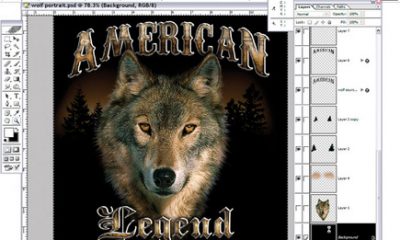Digital Printing
Published
16 years agoon
Ive been thinking a lot lately about timing and execution, may-be because it’s basketball season. At InfoTrends, we’re always thinking about strategic issues such as new printing technologies, market strategies, and the implications of mergers and acquisitions. These are often some of the dramatic market developments that change the lay of the land in a particular business. The most important factors that affect whether these activities will be a success or failure are timing and execution.
Timing is sometimes beyond our control, so the news of a product introduction or company acquisition might fall flat, while other times new products and technologies appear to address the hottest issues in the market. For manufacturers of digital printing equipment, successful execution means bringing to market products and technologies that solve business problems.
Two technologies I have learned about recently appear to be in the latter category for both good timing and execution: HP’s Latex inkjet printing system and Océ’s ColorWave technology. Based on our research, we think there are three key issues in the wide-format-printing market right now: costs of operating the printer, sustainability, and productivity/workflow. These technologies from HP and Océ appear to address these three key issues in different ways.
What is latex ink?
Latex ink is actually water-based ink with polymer particles that are essentially melted onto the substrate. The polymers are linked to a binding agent that secures the colorant to the media’s surface. There are no volatile organic compounds (VOCs) because they are water-based inks; however, separate drying stations are required to dry the water contained in the inks. HP’s Latex inks would work on uncoated media in the same manner that robust solvent inkjet inks do. The first piece of wide-format printing equipment based on HP’s Latex inks can print at nearly 1000 sq ft/hr. So, HP’s Latex inks are formulated to enable lower running costs, eliminate the VOC issue, and improve productivity.
The new HP Latex ink printer will use the same printhead that already powers two of HP’s commercially available solutions. One is a light-production, color, narrow-format printer. The other is a photo kiosk type of device. So the print-technology part of HP’s solution is worked out. Few would argue that water-based inkjet printers provide the best image quality available in wide-format digital printing systems today, and certainly HP has a mountain of intellectual property in the thermal-inkjet business. Therefore, any question about the viability of HP’s Latex ink printers must be about the inks, not the printheads.
One of the things I find particularly interesting is that HP’s Latex ink technology could breathe life back into the wide-format aqueous-inkjet-printer market in the production-graphics segment. At InfoTrends, we’ve been saying that there are limited growth opportunities in the production-graphics business for water-based inkjet because the running costs are too high compared to wide-format solvent and UV-curable inkjet. Additionally, wide-format aqueous inkjet printing requires coated media and, for outdoor graphics, requires lamination for durability. Latex ink appears to address many of these drawbacks and improve matters concerning sustainability as well.
What is ColorWave?
In basic terms, ColorWave technology is a wide-format color laser printer. There’s much more behind the technology, but essentially it’s a toner-based system instead of an inkjet system. Océ is a leader in the wide-format LED printer market. LED printers are nearly all monochrome devices intended for use by architects, engineers, and construction companies, as well as reprographics shops on the print-for-pay side. Océ has conceptualized and developed ColorWave for approximately ten years, with an objective to incorporate the best characteristics of both LED and inkjet technologies.
LED printers are very reliable and inexpensive to operate on a cost-per-square-foot basis, but offer very few options for color printing. Inkjet printers can do a fantastic job of color printing, and can print onto a variety of substrates, but operate at relatively high running costs. ColorWave is a color printing technology that works well with uncoated bond papers typically used in the engineering environment, and, because it is a toner-based technology, the print media can be recycled. Océ has been installing ColorWave printers in Europe since late 2007, so this technology is way beyond the beta testing period.
ColorWave is primarily designed for wide-format engineering documents, but could meet the needs of the market for indoor graphics as well. This is where timing comes in. The emergence of a wide-format, color, toner-based printing technology that offers strong enough print quality to address the indoor graphics market would have a negative effect on the overall wide-format aqueous-inkjet market. So, ColorWave could offset any growth that aqueous inkjet sees because of the emergence of HP’s Latex inkjet inks. Both HP’s Latex Ink and Océ’s ColorWave technologies are reportedly quite scalable, so we ex-pect to see them in a variety of formats in the future.
Latex Ink and ColorWave technologies are extremely innovative. They mark potentially very dramatic examples of steps forward in the market for wide-format digital printing in terms of continuous improvements that enable market growth. We’ve seen a number of new products just this year that promise to maintain this cycle of continuous product improvement. Another important development in wide-format digital is the entry of some of the bigger companies, particularly Xerox and Epson, into the wide-format solvent inkjet market.
Xerox? Epson?
Yes. Using wide-format solvent inkjet engines powered by Mutoh, Xerox will push wide-format eco- and light-solvent inkjet printers into non-traditional markets. One of these is commercial printing, where Xerox’s high-speed production equipment is already located. Many of these locations serve a lot of the same customers that sign and screen printers serve, but now Xerox can offer wide-format services at a relatively inexpensive cost and still operate on one vendor platform. Many would argue that Xerox’s Versatec was one of the original wide-format digital graphics printers. Things have a way of coming back around, don’t they?
Epson’s launch into the wide-format, safe-solvent business is potentially very interesting as well. Epson has long supplied printhead technology to many of the market leaders in wide-format solvent inkjet, but the launch of its GS6000 64-in.-wide printer warrants attention, in my view, because of Epson’s focus on print quality. We’ve been saying for a while now that due to print-quality improvements in the eco-solvent market, combined with lower running costs, eco-solvent technology would take some of the print volume away from wide-format aqueous inkjet in the graphics business. Epson’s GS6000 uses eight colors and the company’s new UltraChrome GS inks, which Epson indicates are a safe-solvent ink by virtue of their nickel-free composition. The Epson printer also prints up to 340 sq ft/hr, making it one of the fastest printers in its class.
It’s also interesting that the Océ and the Epson products are being launched with additional device-management and usage-tracking utilities. Epson’s utility is called myEpsonprinter, while Océ’s utility is called SmartClick. I think the addition of these utilities is becoming more of a standard offering and reflects a greater focus on a more comprehensive printing solution than what vendors have offered in the past. It’s clear that manufacturers are packing more and more value into wide-format equipment, even as prices for that equipment remain stable or even decline.
New technologies
Timing and execution are also key for printing establishments when deciding to adopt new technologies. Significant first-mover advantages are gained by being the earliest to adopt new technologies or production processes. But you can get burned by vendors or products that promise too much too soon. Time will tell where the Océ, HP, Epson, and Xerox technologies and initiatives fall in those terms.
The more I speak to printing establishments, the more I see that timing new hardware acquisitions is both a near-term and big-picture issue. In the near term, time it so you get the best deal from your sales rep. In the big picture, timing the acquisition can help you address new markets, improve your top and bottom lines, and protect your client base. I believe these new technologies mark the next wave of innovative solutions that will alter the wide-format landscape in the next five years by offering graphics printers the opportunity to meet some key market challenges.
Tim Greene has worked at Info Trends (formerly known as CAP Ventures) since 1997 and been the director of InfoTrends’ Wide Format Printing Consulting Service since 2001. He is responsible for developing worldwide forecasts of the wide-format-printing market and conducting primary and secondary research. Greene holds a bachelor’s degree in management from Northeastern University. He can be reached at tim_greene@infotrends.com.

Subscribe

Magazine
Get the most important news
and business ideas from Screenprinting Magazine.
Most Popular
-

 Case Studies2 months ago
Case Studies2 months agoHigh-Density Inks Help Specialty Printing Take Center Stage
-

 Art, Ad, or Alchemy2 months ago
Art, Ad, or Alchemy2 months agoF&I Printing Is Everywhere!
-

 Andy MacDougall2 months ago
Andy MacDougall2 months agoFunctional and Industrial Printing is EVERYWHERE!
-

 Columns3 weeks ago
Columns3 weeks ago8 Marketing Mistakes Not to Make When Promoting Your Screen Printing Services Online
-

 Editor's Note2 weeks ago
Editor's Note2 weeks agoLivin’ the High Life
-

 Marshall Atkinson2 weeks ago
Marshall Atkinson2 weeks agoHow to Create a Winning Culture in Your Screen-Printing Business
-

 Thomas Trimingham2 months ago
Thomas Trimingham2 months ago“Magic” Marketing for Screen Printing Shops
-

 News & Trends2 months ago
News & Trends2 months agoWhat Are ZALPHAS and How Can You Serve Them in Your Print Business?






